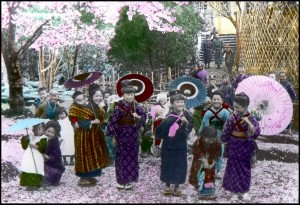- University of Hawaii’s work on taro summarized.
- Watch out for FAO’s new NWFP-Digest. Non-timber, non-wood; what’s the difference?
- The transition of maca from neglect to market prominence. Free download.
- Maize and malaria in Ethiopia.
- Gary Nabhan interviewed. Again.
- NPR on the limits of the Green Revolution.
- Cocks still fighting in India.
- The early Egyptians “…were very aware of the benefits that natural additives can have—especially if dissolved into an alcoholic medium, like wine or beer.”
- Brosimum alicastrum to the rescue.
- Uganda’s biofuel hopes dashed by virus? Say it aint so.
Nibbles: French fries, Maple syrup, Cooking heirlooms, Salmon, Ancient booze, Rice domestication
- India finally arrives, gets french fries.
- Sophisticated urbanites tap maples.
- Raise a rare heirloom breed. Then cook it.
- “Some might be hoping he will predict a return to the glory days of the “truly unique” strain of Petitcodiac salmon, which now likely exists only in a gene bank at the Mactaquac Fish Hatchery at this point.”
- Boffins identify world’s first cocktail.
- How people turned from nut collectors into rice farmers in China.
- Hungarians sacrificed dogs.
More complex, more interesting, more hopeful
There is simply no way to summarize Willie Smits‘ Ted Talk. It is a masterful description of putting the complexity in an agricultural ecosystem to work to solve the problems of humans and orang-utans. Just astonishing. And so much more intellectually satisfying than a simplified system. Luscious.
花見
And while on the subject of spring, what could be more redolent of Nature’s awakening after winter’s torpor than hanami (花見) — flower watching? You can do it in Washington DC, Brooklyn or Skopje. But the best place to follow the sakurazensen — the cherry blossom front — is clearly Japan. You’ve still got a few more weeks if you live in Hokkaido.

Nouvelle cuisine
Idaho’s Treasure Valley Farmer-Chef Collaborative sounds like a really cool idea. It brings producers — including producers of some fairly unusual things for Idaho — together with the area’s top restaurateurs. The former get a lucrative market, the latter some interesting new ingredients with which to attract customers. Everybody wins. And speaking of interesting new ingredients, how about goat meat? Apparently, New Yorkers have just discovered it. Fuggedaboutit.